When Do Infants Start Standing and How to Help
Most infants start standing between 9 to 12 months. Every baby develops at their own pace, so some may stand earlier or later.
That said, we understand the concern, especially if you're a new parent. When will my baby learn to stand? How do I gauge my baby's ability?
In this article we'll explore the developmental milestones leading to standing and answer the question: when do infants start standing? It will also provide tips on how you can help your baby achieve this important stage.
When Do Babies Stand?
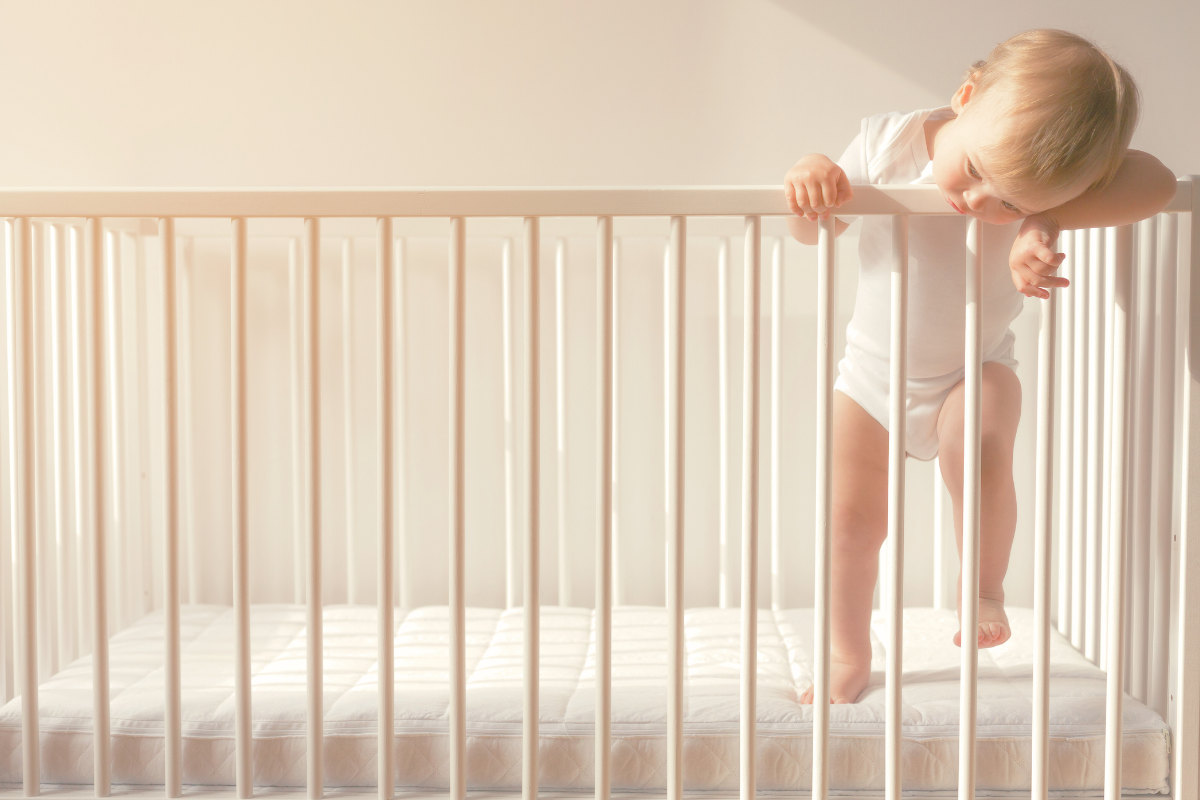
Watching your baby stand for the first time is a memory you’ll never forget. Most babies can already stand up by their first year, but do you know when they first start doing it?
Before we discuss it in more detail, keep in mind that the definition for standing up does differ from situation to situation.
Here's the basics in a nutshell:
-
Standing with support: 3-6 months
-
Standing while holding onto something: 6-12 months
-
Standing up unsupported: 9-16 months
Believe it or not, babies are a lot more capable than one would think.
Although most literature say that babies first begin standing up around 6-9 months, the truth is that many babies stand up much earlier than this. Starting at around 3 months, babies can learn to stand by pulling themselves up into a standing position and holding on for support. By the time they reach 12 months, a large majority of babies can already stand up unsupported.
In fact, based on research from the Norwegian University of Science and Technology, the earliest age for standing unsupported is 3.6 months. This shows that it is possible for babies to be standing unsupported by 4 months of age, as long they receive proper training and help beforehand.
That said, it's important to remember that not all babies will reach their milestones at the "right" time. The Center on the Developing Child at Harvard reminds parents that not only is there a wide range for normal, but that every infant is different. Many will still grow to be completely normal, healthy children even if they miss the average milestone timetable.
What Signs Show That Your Baby Is Getting Ready to Stand?
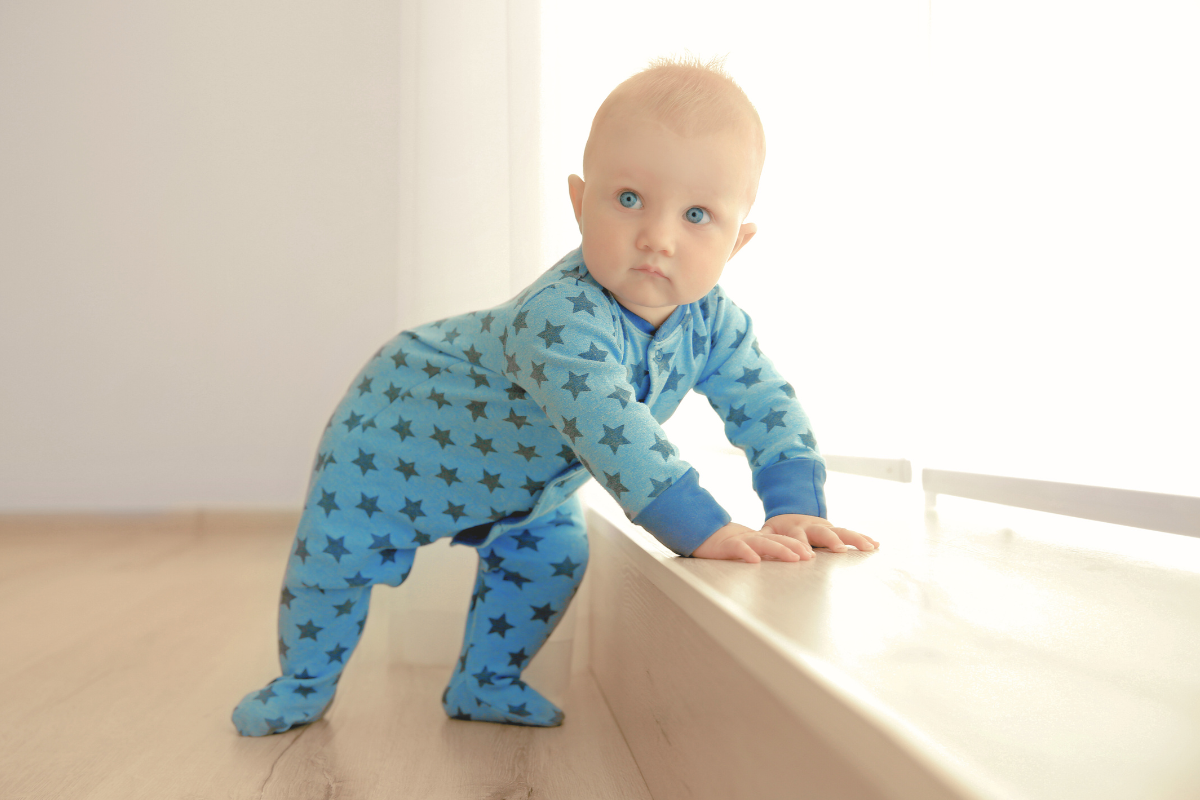
Before your baby can stand, there are little hints that show they’re preparing for this big moment. Here are the most important ones to watch out for.
Stronger Core and Upper Body
Babies need serious core strength before they can stand independently. To do that, they need to develop strong core muscles, and tummy time is where it all starts.
In fact, the American Academy of Pediatrics recommends regular tummy time starting at 3-5 minutes two to three times a day to about 15-30 minutes once they reach two months of age.
These supervised tummy time sessions are necessary for preventing flat-head syndrome, which can happen in babies that spend too much time on their back. It also helps babies develop the same muscles need for sitting and standing.
Pushing Down With Legs
Have you noticed that when you hold a baby under the arms, they start pushing down with their legs and may even appear to take a step? This is known as a step reflex, and it usually shows up at 3-4 months of age and lasts for about 2 months.
It doesn't necessarily mean that your baby is ready to stand, but it does suggest that your baby's starting to build the muscle strength needed to support their own weight. Plus, if your baby loves bouncing while you hold them up, even better – those bouncy motions are helping to tone their legs and improve their leg strength.
Pulling to Stand
One of the biggest “aha” moments is when your baby starts pulling themselves up on anything they can grab – your furniture, your hands, maybe even the family pet (so watch out, Fluffy!).
Usually, babies pull to stand starting from the ages of 7 to 10 months. This milestone is huge because it means their muscles and coordination are coming together. It's also a clear sign they’re gearing up for solo standing. They pull themselves up to explore their surroundings from a whole new angle.
Reaching for Objects Above Eye Level
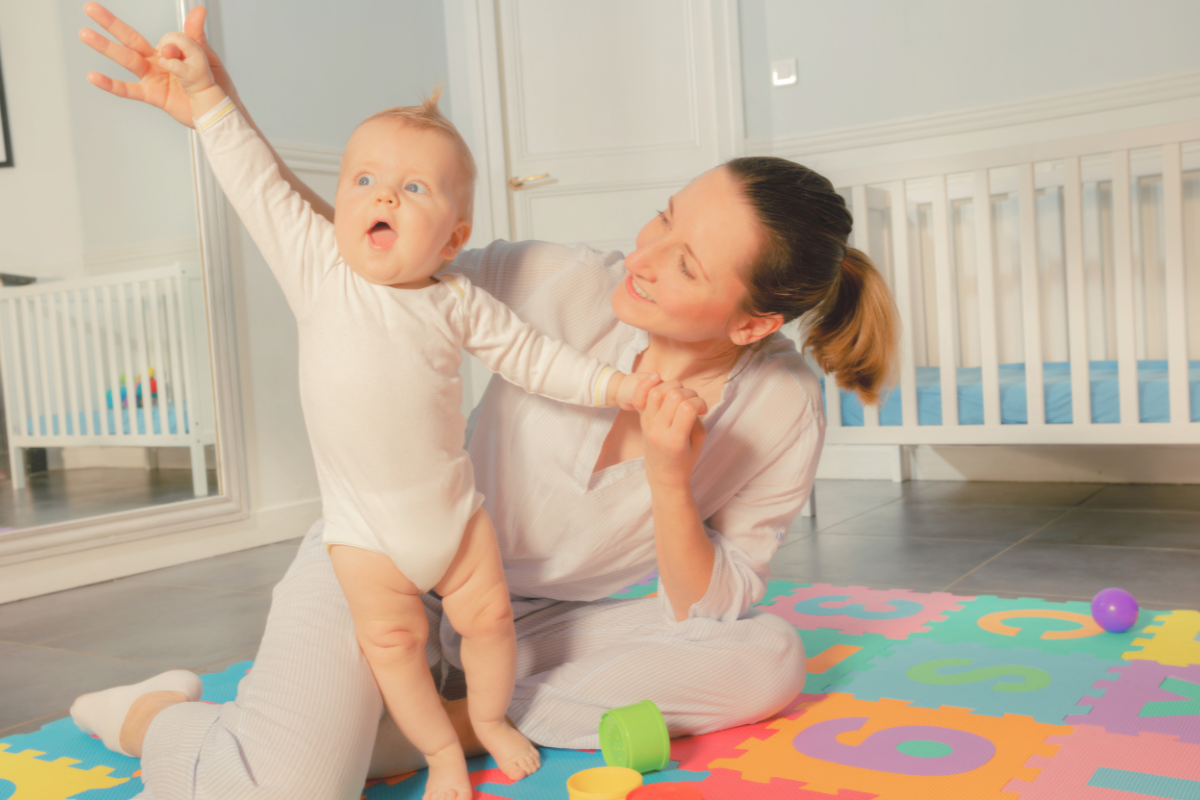
Babies are naturally curious, and their curiosity can be a powerful motivator for standing.
Around 9 to 11 months, you’ll start noticing them reaching for toys or objects that are slightly out of their immediate reach. Dr. Mary Carol Burkhardt from the Cincinnati Children’s Hospital explains that babies are often driven by curiosity at this stage.
This desire to grab things above eye level encourages babies to stretch, strengthen their arms and legs, and eventually stand up. So, place something colorful or interesting on a low table, and watch them go.
Balancing While Sitting or Kneeling
Another big clue that standing is just around the corner is when your baby can sit without tipping over or kneel and rock back and forth.
Kneeling helps build the muscles in their hips and thighs, which are both important in the standing game. This playful rocking motion is also great for balance. Once they can sit confidently or kneel for a bit, they’re almost ready to take the next step!
Cruising Along Furniture
Cruising is your baby’s way of testing their balance while still holding on for support. It usually starts around 10 to 12 months, and it’s one of the final steps before they start standing on their own.
When your baby starts cruising along the couch or coffee table, they’re practicing how to shift their weight from one foot to the other. Pediatricians say that cruising not only helps build physical strength but also teaches babies to balance.
Also, you might notice them let go for just a second or two—don’t be surprised if those seconds quickly turn into full-fledged standing.
5 Common Standing Challenges for Babies and How to Solve Them
It's completely natural to encounter some problems when your baby is learning to stand on their own two feet for the first time.
Lack of Interest in Standing

It can be a little frustrating when your baby doesn’t seem all that interested in standing. They might be perfectly happy crawling or sitting, with no desire to pull up.
But don't worry – babies often go through phases where certain skills take a back seat. Sometimes, they’re simply focused on other things, like babbling or exploring toys on the ground. It’s all part of their individual growth.
Solution: The way to help babies learn to stand independently is to get them interested in it in the first place. Try sparking their curiosity. Engage them in playful activities that motivate them to stand, and let them interact with other babies who are slightly older. You can also engage your baby in play activities that happen during floor time, incentivizing babies to practice pulling up more frequently.
Difficulty Balancing
Balance is tricky for babies who are just learning to stand. As a baby pulls up into a standing position, they can lose their balance and fall. And even if your little one is strong enough to pull up, they might struggle with staying upright without holding onto something. Wobbling and falling are completely normal at this stage.
Most infants begin the journey to standing independently by initially supporting their weight with assistance. In these early stages, your baby will rely on furniture, walls, or even you for stability.
Some babies might get frustrated because they can’t balance as well as they’d like, but with time, those little legs and core muscles will get stronger.
Solution: Give your baby lots of chances to practice balancing in a safe space. Encourage them to do little "squats" by putting a toy on the floor in front of them while they’re standing. Walking hand-in-hand or letting them push a sturdy toy can also help with balance. Remember, balance takes time, so keep encouraging them!
Fear of Falling
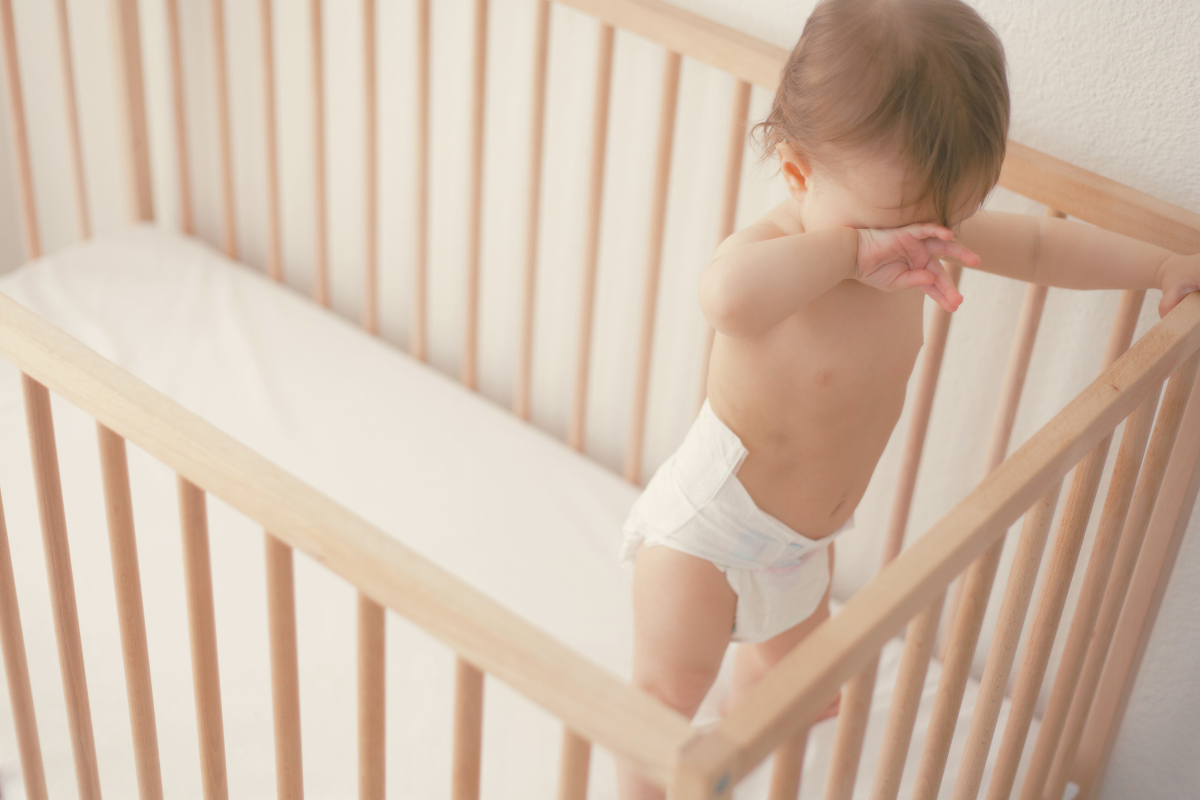
If your baby has taken a few spills, they might start hesitating when it comes to standing. It’s natural for babies to be a little scared after a fall, and that fear can make them reluctant to try again.
This can look like them clinging to furniture or sitting down quickly instead of standing tall. It’s tough to see them scared, but remember, falling is part of the process.
Solution: Help your baby work through their fear by creating a safe, cushioned space for practice. Use the Poppyseed Padded Play Mat or the Linen Play Mat to provide a place where they can stand and explore without fear of hard falls. Offer lots of praise when they stand, even if it’s just for a few seconds, and stay close by to offer a comforting hand when they get wobbly. Every little win counts!
Easily Distracted
If your baby is more interested in the noise across the room than standing, you’re not alone! Babies are easily distracted, and sometimes their curiosity about the world gets in the way of focusing on learning to stand. You might see them pull up, only to drop back down the second they hear a sound or see something shiny.
While curiosity is a wonderful trait, it can slow down standing practice. The more distracted they are, the less time they spend actually practicing their balance and strength.
Solution: Try creating a quiet, focused space for standing practice. Set up a little area where there are fewer distractions. Consider adding the Poppyseed Baby Gym, whose hanging toys can encourage them to stand while they focus on reaching and playing. Keeping the environment calm and simple can help them concentrate on standing without being pulled in every direction by distractions.
Frustration with Slow Progress
Babies can get frustrated just like adults, especially if they feel like they’re not getting the hang of something.
If your little one is trying to stand but keeps wobbling or falling, you might notice them getting upset. They might even start avoiding standing altogether because it’s not going as smoothly as they’d like. This can be tough to watch, but it's completely normal. Luckily, with lots of practice and patience, they’ll make progress—slow and steady wins the race!
Solution: Be your baby’s biggest cheerleader! Celebrate the small wins, like pulling up or standing for just a few seconds. Keep practice sessions short and fun, and don’t worry if things don’t happen right away. The more you cheer them on and make it fun, the more confident they’ll feel about trying again.
Safety Tips for Babies Learning to Stand
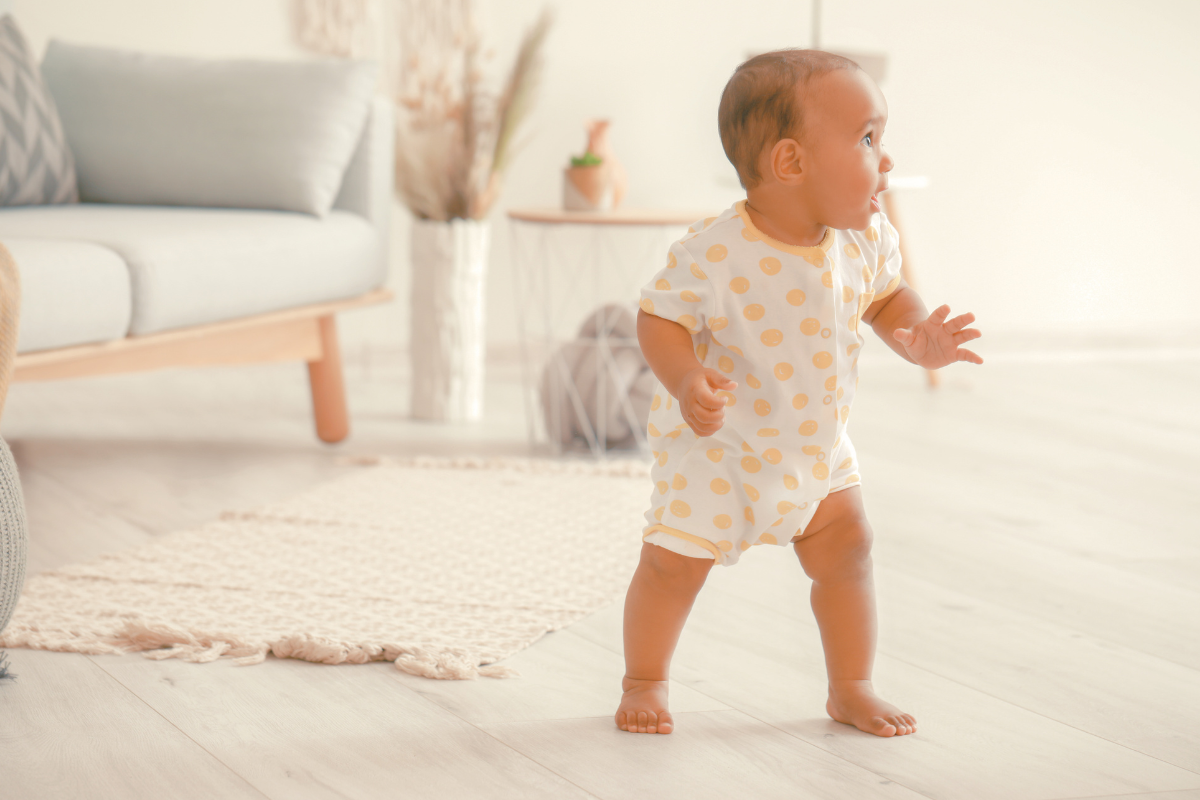
Your little one is on the verge of an exciting new milestone: standing! The thing is, it’s important to create a safe environment for all their wobbly attempts. Here’s how you can make their standing journey fun and secure.
Clear Space So They Can Move Freely
As your baby gets ready to stand, they’ll need space to move freely. Clear out anything that could get in the way—sharp-edged furniture, hard surfaces, or clutter on the floor. Soft corner guards are also great to have.
Think of this as creating a mini adventure zone where they can practice standing, toppling, and trying again without getting hurt. A little extra space goes a long way!
Anchor the Furniture They’ll Grab Onto
Babies will grab anything within reach when they start pulling up—whether it’s bookshelves, tables, or chairs.
Double-check that these items are sturdy and won’t tip over if they tug too hard. Straps or anchors work wonders here. Picture your baby testing every piece of furniture like a mini rock climber. You want to make sure the things they grab stay steady so they can pull up without a problem.
Create Soft Landings for Tumbles
Tumbles are bound to happen, so get ahead of them by laying down soft rugs or mats like the Poppyseed Padded Play Mat where your baby practices standing. Cushioned flooring helps protect them from bumps and bruises as they find their balance.
Consider this as setting up a cozy little practice area. The softer the ground, the more confident they’ll feel about standing and trying again.
Keep the Floor Clutter-Free
Babies are curious creatures, always reaching for anything they can spot on the floor. Loose toys, shoes, or even pet items can become tripping hazards as they try to stand and move around.
A tidy floor means fewer obstacles for your baby to trip over, helping them stay focused on mastering their balance. Plus, it keeps their surroundings safe as they start to explore.
Be Their Cheerleader
No matter how much prep you do, nothing beats being nearby when your baby starts standing.
Stay within arm’s reach so you can catch them if they fall or offer a little boost when needed. Your presence is a huge confidence booster -- they’ll feel safe knowing you’re right there as they work on standing tall.
You’re not just there to keep them safe; you’re their biggest fan, cheering them on through every wobble and stumble!
Should I Be Concerned If My Baby Isn't Standing Up?
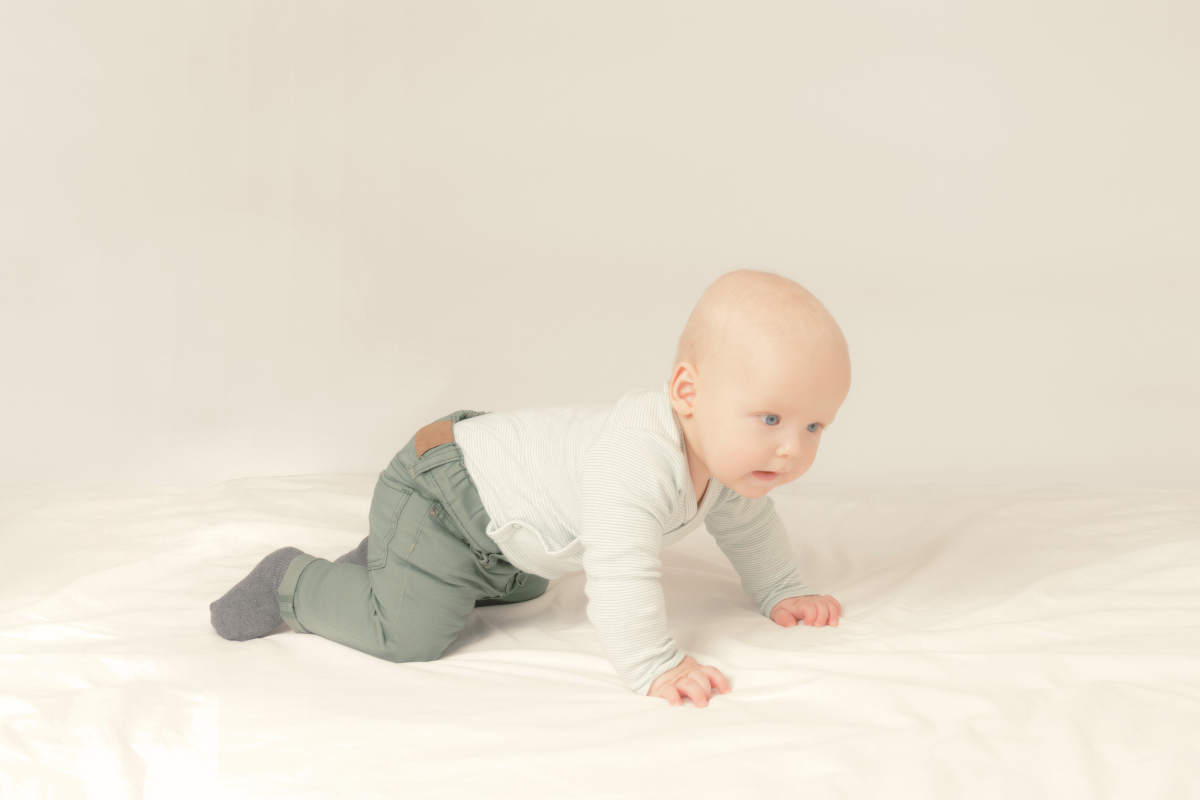
If your baby hasn’t started standing by 16 months, it’s a good idea to talk to your pediatrician. They can check for any developmental delays or other issues that might be causing the delay.
Keep an eye out for signs like weak or stiff muscles, uneven movements, or if your baby seems to lose skills they once had. If you notice these things, it’s important to bring them up with your doctor so your baby can get the support they need.
Final Thoughts
Watching your baby go from crawling to standing is an exciting part of parenthood, filled with joy, patience, and a few wobbles. While each baby’s timeline is unique, most will begin standing between 9 and 12 months.
The journey may have some bumps—whether it’s a lack of interest, balance struggles, or just a little hesitation—but with plenty of encouragement and safe, supportive spaces, your baby will get there in their own time.
Remember, every step (or wobble) is progress. So enjoy the ride, celebrate the small wins, and keep cheering them on as they grow!
Frequently Asked Questions
When should I expect my baby to start standing?
Most babies start standing with support somewhere between 9 and 12 months. Some might get the hang of it earlier around 8 months, but you can also expect baby to take their time and start closer to 15 months. Don’t stress! Babies develop at their own pace, and that’s totally normal.
How can I encourage my baby to stand?
There are many ways to encourage baby to stand, but one of our favorites is placing their favorite toy just out of reach on a low table. This gets them motivated to pull up. You can also help by holding their hands and guiding them into a standing position during play.
How do I know if my baby’s ability to stand is developing normally?
You’ll know things are on track with your baby's development when your baby starts pulling up to stand, cruising along furniture, and balancing for a few seconds without help. Every little step is progress. If they’re working on these things, they’re moving in the right direction.




